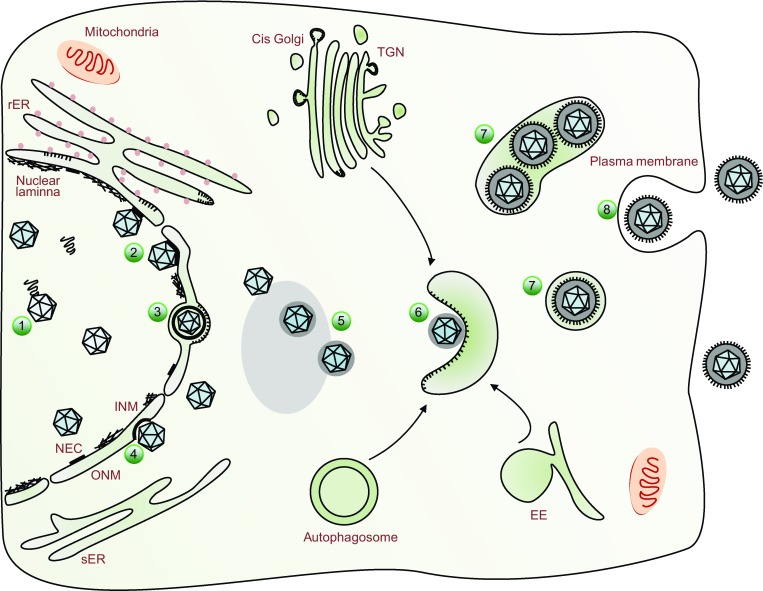Figure 1.

A schematic representation of herpesvirus assembly and egress. In the nucleus, newly synthesized viral genomes are packaged into the capsids (1). The nascent nucleocapsids traffic to the inner nuclear membrane (INM) where nuclear egress complex (NEC) are anchored and the nuclear lamina has been dissolved by host or viral kinases (2). Nucleocapsids bud at the INM, forming primary enveloped virions in the perinuclear space (3, primary envelopment). The primary envelopes of virions then fuse with the outer nuclear membrane (ONM), releasing the nucleocapsids into the cytoplasm (4, deenvelopment). In the cytoplasm, nucleocapsids acquire tegument proteins at electron-dense deposits, which is obvious in transmission electron microscopy micrograph (5). The tegumented capsids bud into special vesicles (6) that may derive from trans-Golgi network (TGN), early endosome (EE) or autophagosome, and form mature virions inside vesicles (7, secondary envelopment). Finally, these vesicles fuse with the plasma membrane and release mature virions to extracellular space (8)
